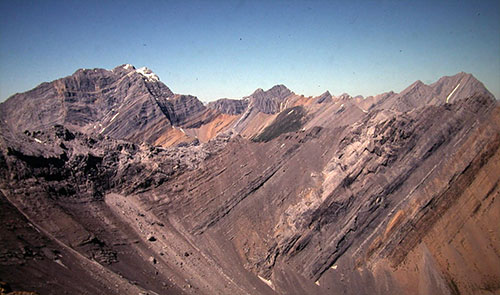
Did plants cause one of Earth’s great extinctions?By NED ROZELL
March 02, 2018
Perhaps the best known and most spectacular extinction was that of the dinosaurs, caused when a meteorite six miles in diameter crashed into Earth about 65 million years ago.
There was another event that killed most of the life in the world’s oceans. It happened more than 300 million years earlier than the impact that doomed the Tyrannosaurus. Back then, in the age of fish, the 30-foot, armor-plated shark-eater known as Dunkleosteus might have thought its reign would last forever. Clues are hard to come by when you’re trying to look back to a time when the continents clumped together like a closed fist. But geologists have found evidence that plants, the most gentle of organisms, may have helped kill most of the life in the oceans 374 million years ago. Mike Whalen is one of those geologists. He works at the University of Alaska Fairbanks and spends his summers picking at ancient sea floors now lifted in high mountain walls, hundreds of miles from salt water. On rocky ridges from China to Belgium to the Rockies in Canada, he and his colleagues have found black rocks that point to a mass extinction in a period they call the Devonian. Those rocks, layers of shale, are the remains of living things that did not completely decompose, which hints that there was little oxygen to power the tiny creatures that gobble up just about everything. Developing land plants could have choked out life in the oceans, say Whalen and his coauthors, who wrote a paper that appeared recently in the journal Nature Communications. A more circular orbit of Earth around the sun —leading to years with no great difference between summer and winter — might have also helped doom most of the fish. When most of Earth’s life was underwater, carbon dioxide flooded the air in much higher concentrations than today. That led to the emergence of organisms that flourish on that gas - plants. Land plants developed deep root systems that tapped into and freed nutrients from rocks. Those compounds ran off into rivers and then to the sea. The sudden-in-geologic-time input of nutrients may have been disastrous for fish, Whalen said. Plankton and bacteria burned through most of the ocean’s oxygen, leaving little for fish and the corals that left giant reefs behind. “It’s like dumping fertilizer into the ocean, causing no oxygen in bottom water and creating these nasty dead zones,” he said. “There was never an input to the ocean at that rate before.” Using rocks from across the globe, Whalen’s colleague David De Vleeschouwer at the University of Bremen helped to determine that the great extinction coincided with a period when Earth’s orbit around the sun resembled a circle, rather than an oval. That meant the planet did not experience extreme seasonal heating and cooling. That caused “sluggish ocean circulations and stratification of the water column, both favoring low oxygen levels,” De Vleeschouwer wrote. Perhaps adding to the problems of Dunkleosteus and other fish was the fact that sea level was falling across the globe at the time. “You’re bringing all those nutrients into shallow-water seas,” Whalen said. Though most of us don’t think much about the centuries preceding our lives, not to mention millions of years ago, geologists like Whalen spend their whole careers teasing out former worlds. The point, he said, is relating complex events of the past to what we are seeing today. “It’s trying to figure out how the Earth works,” he said.
Representations of fact and opinions in comments posted are solely those of the individual posters and do not represent the opinions of Sitnews.
|
||||
